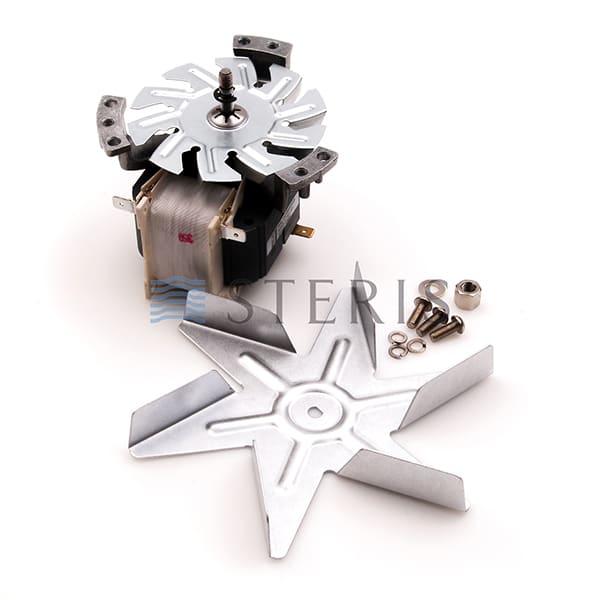In the world of clinical engineering and healthcare technology management (HTM), maintaining equipment uptime is critical. Warming cabinets are heavily relied upon in hospitals and surgical centers to keep fluids and blankets at the right temperature, enhancing both patient comfort and safety. When airflow issues arise, they can often be traced back to fan failure. For this reason, having a quality Replacement Steris Fan Kit on hand is essential for biomedical technicians and procurement teams committed to minimizing downtime and keeping clinical operations smooth.
Why Fan Kits Are Critical in Warming Cabinets
Warming cabinets, particularly Steris 5th generation models, are designed for consistency and reliability. The fan system plays a pivotal role in ensuring even distribution of heat, preventing temperature fluctuations that could compromise patient safety or disrupt workflow.
When a fan begins to fail, signs can include:
- Uneven heating across shelves
- Audible noises from worn bearings or motor strain
- Higher-than-normal cabinet temperatures
- Intermittent shutdowns due to airflow errors
Addressing these problems quickly is essential to avoid operational delays in areas such as surgery, intensive care, or labor and delivery.
Common Causes of Fan Failure
Biomedical equipment technicians frequently encounter fan-related issues due to:
- Wear and Tear: Continuous operation over years of service naturally degrades fan performance.
- Dust and Debris Build-Up: Restricted airflow strains motors and reduces efficiency.
- Electrical Malfunctions: Power surges or faulty wiring can shorten the lifespan of the motor.
- Inadequate Preventive Maintenance: Skipping routine inspections often leads to unnoticed degradation until complete failure occurs.
Recognizing these causes allows clinical engineering teams to create preventive strategies and ensure critical equipment stays operational.
The Role of Replacement Kits in Maintenance Strategies
Stocking fan replacement kits is an effective way to streamline equipment servicing. Having the correct parts readily available means that when a fan begins to fail, technicians can act immediately rather than waiting for parts procurement.
Key benefits include:
- Reduced Downtime: Immediate replacement restores full function quickly.
- Cost Efficiency: Proactive maintenance avoids costly emergency service calls.
- Extended Equipment Life: Replacing worn components reduces strain on other internal systems.
- Improved Compliance: Reliable performance ensures adherence to temperature regulations and patient care standards.
For busy healthcare facilities, these benefits directly support uninterrupted patient care.
Considerations When Selecting a Replacement Fan Kit
Not all replacement parts are equal. Biomedical equipment teams should pay close attention to:
- OEM Compatibility: Ensuring the fan kit is specifically designed for Steris 5th generation warming cabinets.
- Quality Assurance: Selecting parts that meet or exceed original manufacturer standards.
- Ease of Installation: Replacement kits designed for fast, straightforward installation reduce technician time and labor costs.
- Vendor Reliability: Partnering with trusted suppliers ensures consistent quality and availability.
Choosing the right kit helps avoid costly errors and maintains high performance across clinical environments.
The Technician’s Perspective
Biomedical technicians understand that quick response and reliable fixes are non-negotiable in healthcare settings. A failed fan doesn’t just inconvenience staff—it can delay procedures, create compliance issues, and in some cases, put patient outcomes at risk.
For this reason, technicians often advocate for:
- Maintaining Spare Kits: Stocking fan kits as part of a hospital’s standard parts inventory.
- Scheduled Preventive Replacement: Swapping fans at regular intervals, even before failure occurs.
- Clear Documentation: Tracking replacement cycles in service records for compliance audits.
This proactive approach ensures clinical staff can rely on their equipment without interruption.
Best Practices for Long-Term Reliability
To maximize the lifespan of warming cabinet fan systems, facilities should adopt the following best practices:
- Routine Cleaning: Dust and debris should be cleared from vents and fans regularly.
- Performance Monitoring: Keep track of operating temperatures to detect irregularities early.
- Spare Parts Inventory: Always maintain a buffer stock of critical replacement parts.
- Training and Documentation: Ensure technicians are trained on both troubleshooting and proper installation of fan kits.
When combined, these practices not only reduce emergency failures but also support hospital-wide operational efficiency.
Conclusion
The reliability of warming cabinets is integral to patient care, and the fan system is at the heart of their consistent performance. When failures occur, having the right replacement kit available can make the difference between hours of downtime and uninterrupted service. For biomedical equipment technicians and procurement managers, prioritizing spare parts inventory and quality replacements is an investment in both patient safety and operational efficiency.
Healthcare facilities looking for trusted sources of reliable parts and technical expertise can turn to THE BIOMED GUYS, a partner dedicated to supporting HTM departments and clinical engineering teams with quality solutions that keep critical equipment running.


